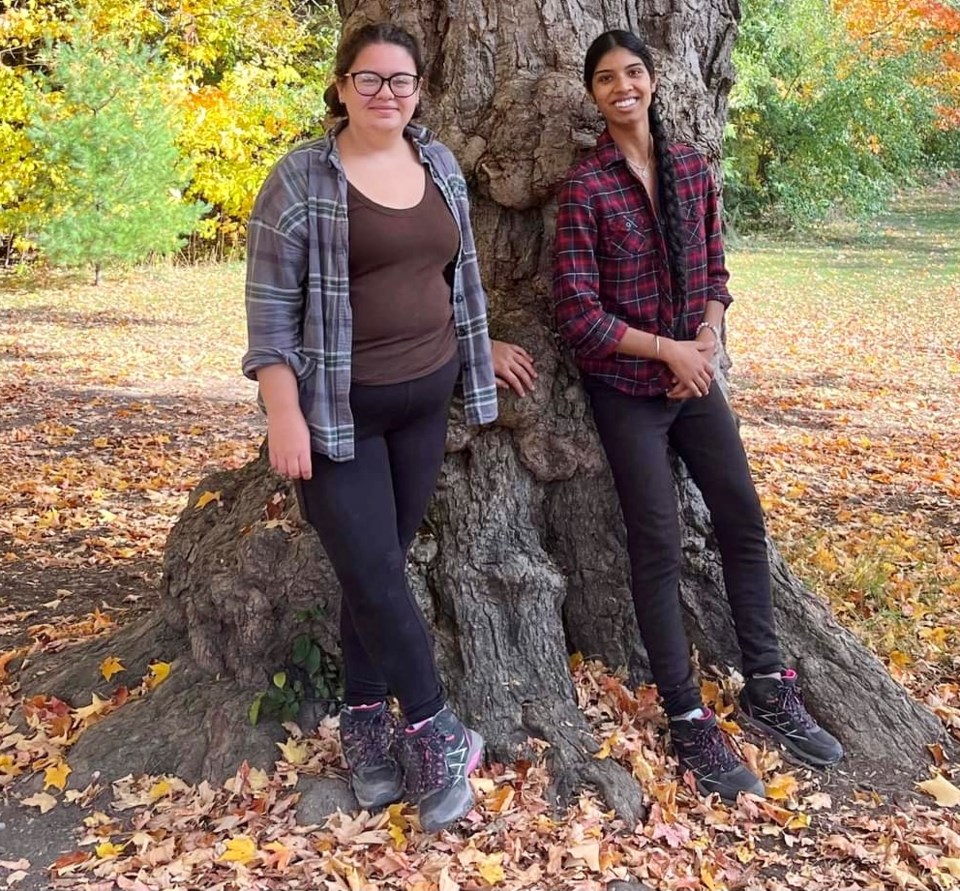A student-run group at the University of Guelph is collecting information on the abundant wildlife and nature found on campus. Now, they're inviting the community to join in to add to future research efforts.
Called the U of G Biodiversity Inventory, the project uses a social network called iNaturalist to gather information about biodiversity on campus for education, research and outreach.
Leading the biodiversity inventory are student leaders and friends, Gurleen Chana and Julie-Ann Arbour. Also fourth year zoology students, both also have a bit of experience in identifying and recording wildlife and nature.
"For Julie and I, it's kind of our hobby to go out and ID stuff, which is a bit nerdy, but we enjoy it, so it was kind of nice to turn it into something a bit more than that (a hobby)," said Chana.
Each was motivated to create this inventory based on their experiences as first year students, and not knowing about the biodiversity on campus. To support them in the project is a team consisting of two other student executives and a group of volunteers.
"When I go and ID things, I don't usually think, 'Oh, let's go to the main campus,' but there is a surprising amount of biodiversity," said Arbour.
"I think for me, it was learning, for me, especially in the Arboretum, there were a lot of non-native species brought to campus for educational purposes, and I didn't learn that until I was walking around the campus," said Chana.
The way the inventory works is participants can go onto the iNaturalist app, search for the University of Guelph campus biodiversity inventory and join the group. From there, they can begin to submit observations of biodiversity on campus.
"It makes it really easy for people who aren't tech savvy to go and do that," Arbour said, adding they are also applying for a grant to get a plaque made with information to join the iNaturalist page.
To encourage participation, the duo organized group walks to help get people started in identifying different species and plants. Now, Chana said they have 370 observations and are growing.
"At some point, hopefully..next year, we'll start a newsletter, or something, and just send out emails of like, 'This is updates on this month about the stats,' and, 'This is where we're at,' and, 'This is where we want to be,'" said Chana.
The idea to start a biodiversity inventory came from the U of G Sustainability Office and the sustainability coordinator, Samantha Casey. This summer, Casey was at Western University and learned about the biodiversity inventory started by staff and students. In August, she sent out an email to volunteers at the sustainability office, asking if any of them would like to help lead the project.
As a department within the university, Casey said one of the goals of the sustainability office is to be an incubator and accelerator for projects that promote sustainability. Some other projects include a seed festival, overseeing composting and recycling projects and more.
"The whole idea is that we provide ideas and then we have student leaders who essentially help co-create that idea with us," said Casey.
"For Gurleen and Julie (Julie-Ann), especially they were zoology students, they were really interested in ecology, they were always outside, they were already doing iNaturalist...they're both fourth year (students) and graduating this upcoming summer, so we proposed, 'Hey, this could be a legacy project, something that you can start up and we could continue on.'"
When it comes to sustainability, Casey adds biodiversity plays a role.
"Having students work on the biodiversity inventory also allows us to be informed on what we could be doing and the actions we should be taking," said Casey, citing squirrels photographed eating from trash cans on campus led to a conversation at the sustainability office about improving infrastructure.
Both Chana and Arbour acknowledge this group would not have been possible without the support of the sustainability office, and opportunities to collaborate with other clubs within the department. Looking back, Chana said it's been a 'big deal' for them both to lead the development of this inventory.
"It really stepped us out of our comfort zones and it feels really good to be making an impact towards future research and conservation efforts," adds Arbour.
Going forward, all three agree they are looking to build up more community partnerships which will help support the biodiversity inventory.
"We want to be working with community partners because it's so important that biodiversity is really spread throughout the whole city, and there's so many incredible organizations, like Nature Guelph and Pollinator Guelph, that are doing such incredible work and there are lots of really neat opportunities for students to be mentored and involved there," said Casey.



